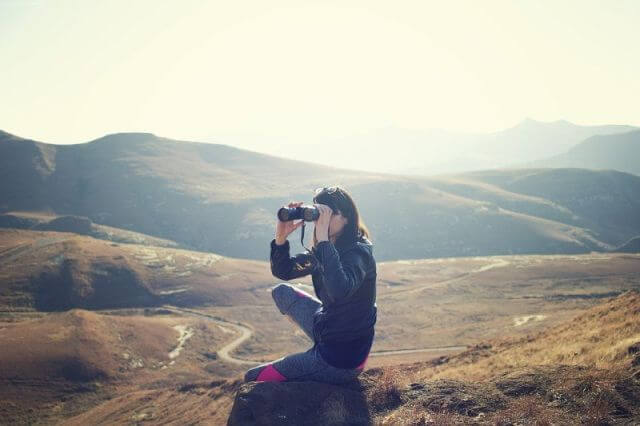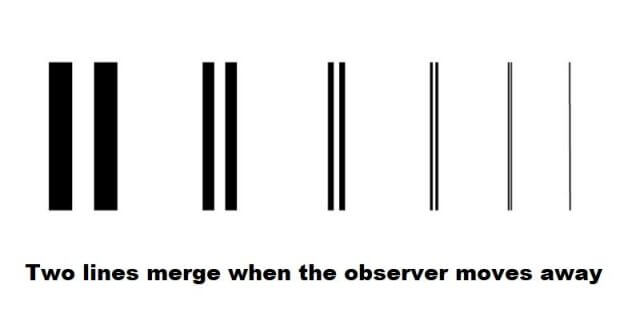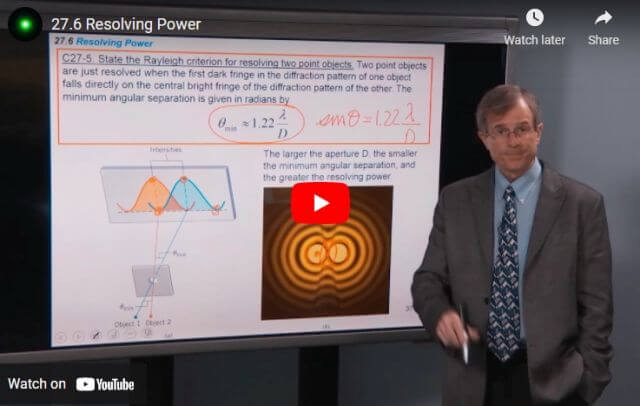Binoculars magnify distant objects and make them appear closer, revealing more detail. But up to what distance, how far can you see with binoculars? This is a question that is asked a lot, mostly by people who don’t have much experience using binoculars.
How far you can see with binoculars depends on what you are looking at. If something is big and bright, you can see it no matter how far it is. But if you want to see things in detail, then there are limits.
As an example, look at people who are standing near you and people who are very far away. When people are near, it’s easy to see who is who. But when people are a mile away it becomes difficult. Details that are required for face recognition can no longer be recognized.
How Far Can You See With Binoculars
Before we explain how far you can see with binoculars, we first need to look at how far you can actually see with the naked eye.
If you look into the distance with the naked eye, you will notice that there is actually no limit other than the horizon. If you look up at the night sky, you can see the moon – which is quite a long way away, and you can see many stars that are even farther at distances that are difficult for an earthbound human to imagine.
So how far can you see? As long as nothing is in the way and the object being observed is large enough and emits or reflects enough light, there seems to be no limit to how far we can see.
What limits how far we can see?
Here on earth, how far can you see with binoculars or with the naked eye depends mainly on two factors, the atmospheric conditions and the curvature of the earth.
How detailed you can see distant things, the detail recognition depends on the resolution.
Atmospheric condition

You have certainly noticed how rain or fog can affect what and how far you can see. So you know from your own experience the effects of the weather (e.g. clouds, fog, rain, etc.) and atmospheric pollution (dust, sandstorm, smog, exhaust gases, etc.). If the weather is cloudy and foggy or the air is heavily polluted, then we can not see as far as in clear weather.
Horizon

Another factor that affects how far we can see is the curvature of the earth, you might have watched a ship disappearing behind the horizon. If you stand on a beach then it’s only about three miles and the ship disappears behind the horizon.
So everyone is probably familiar with the limits of the horizon from personal experience. After all, you know that when you climb a tree or a tower you can see a lot further, and when you stand on top of a mountain the view can truly be spectacular.
Angular Resolution – Recognizing Details
So there is no limit to how far we can see. But there is a limit to how detailed we can see. And how detailed we can see has to do with the resolution of the human eye. More precisely the angular resolution of the human eye.

Angular resolution (resolving power), refers to the ability to differentiate small structures. In simple terms: the minimum distance that objects must be apart in order to be able to perceive them as separate objects.
A relaxed, healthy human eye can resolve two points with a tiny distance of about one arc minute. This works from a few inches in front of the eye to infinity. Unfortunately, this ability decreases with increasing age at close range. (Presbyopia)
So when something is far away we simply cannot see the fine details because they are to close to each other so that the resolution of our eyes is not enough to separate them, they seem to be merged and appear as one.
With the help of an optical instrument, we can enlarge small objects (microscope) or bring distant and therefore small appearing objects closer (enlarge) and thus look at them in more detail.
But an optical instrument is limited by the laws of optics. The Rayleigh criterion describes the minimum distance that can be resolved by an optical instrument. This has to do with diffraction, wavelength, and aperture width. The bottom line is: Bigger is better to see in detail.
So how far can you really see now?
It is in the nature of things that the further away an object is, it appears smaller. And the further away and the smaller things are, the more resolving power the optical instrument needs to have to see those small things in detail. No wonder every newly build large astronomical telescope is bigger than previous ones.
Of course, you soon reach practical limits here. Binoculars that you have to carry with you when hiking or on bird-watching excursions, must not be too big or too heavy. Binoculars with 8x or 10x magnification and lens diameter of 30 to 40 mm are the most suitable in terms of weight and dimensions in relation to optical performance.
What are the best binoculars for long-distance?
It’s hard to say which binoculars are the best for long-distance viewing because it depends on how detailed you want to see things that are far away. I can see a ship that is a long distance away on the horizon with 7x magnification. But if I want to see who is on the bridge then I really need a lot more magnifying power.
There are large binoculars that have a magnification power of 15, 20, or 40 times, but these are so big you can’t hold your hand wobbly – they have to be firmly mounted on tripods.
If you want to see things clearly at a great distance and also want to recognize details, spotting scopes or telescopes are particularly recommended. Thanks to their larger optics, these have better resolution and you can sort of, see further than you can see with binoculars. Of course, these are no longer that compact and also not that easy to transport. A tripod is also essential because at magnifications of more than 12 times it is hardly possible to hold the instrument in your hand without shaking.




